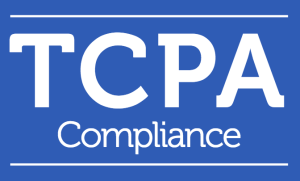Projects aimed at addressing recidivism, employment, chronic homelessness and the mentally ill, were among the five selected as part of a Pay for Success (PFS) Initiative by the Nonprofit Finance Fund and the James Irvine Foundation.
Some 38 applications were received for the $2.5 million grant pool that will provide flexible funding and technical assistance to help nonprofits and government leaders structure Pay for Success programs over the next two years.
“We were impressed by the number of high-quality, outcomes-oriented projects underway across California where Pay for Success financing is being considered,” CEO of the Nonprofit Finance Fund CEO Antony Bugg-Levine said. “Efforts to scale effective programs that address long-standing social challenges, attract private financing to the social sector, and enable more effective use of tax dollars need and deserve support,” he said.
“The initiative has unearthed tremendous interest among California leaders to experiment with Pay for Success,” Don Howard, interim CEO of the James Irvine Foundation, said. “These awards will support five of the most advanced efforts, helping those leaders hammer out agreements and test this innovative financing mechanism with the potential to scale high-quality, evidence-based, prevention programs,” he said.
The five projects were selected for their likelihood of closing an agreement in the next two years:
- Center for Employment Opportunities (CEO) and REDF, to fund cost/benefit and program impact analyses in San Diego County. The two organizations are working to reduce recidivism and improve employment outcomes for formerly incarcerated individuals in San Diego County. CEO is the service provider on a 5.5-year, $13.5-million Pay for Success project in New York City funded in part by Bank of America Merrill Lynch and Boston-based Social Finance, Inc.
- County of Los Angeles, to support development of a “county blueprint” that county supervisors and executives would use in assessing and implementing potential PFS opportunities. The blue print would address administrative and contract issues, highlight potential risk and mitigating factors as well as financial considerations addressed prior to launching a project.
- City and County of San Francisco, feasibility and cost-benefit analyses as well as capacity-building within city and county government. The City and County of San Francisco is analyzing how the PFS model could enable “greater focus on preventative services aligned with the mayor’s strategic priorities in workforce development, housing, public health and human services.”
- County of Santa Clara, to fund program design, deal structuring, evaluation and capacity-building of participating services providers in the county. Santa Clara is pursuing two projects to address chronically homeless, aiming for 100 units of permanent supportive housing and supportive care over six years, and those who are acutely mentally ill. Initial feasibility studies have been completed and landscape and cost-benefit analyses have focused on how private financing can be leveraged to effectively use tax dollars and deliver “significant social outcomes.”
- Nurse-Family Partnership (NFP), to fund an analysis of return on investment at the county level, and convene stakeholders to scale its home visitation program in locations around the Bay Area and Orange County. Aiming to improve pregnancy outcomes, child health and development, the NFP supports first-time mothers living in poverty by pairing them with a nurse who provides home visits from early-stage pregnancy until the child’s second birthday.
Pay for Success projects are under way in New York and Massachusetts but none have been launched yet in California. Pay for Success agreements garner private funding for preventive services up-front, with reimbursements to initial investors from government if certain benchmarks are met. In theory, private investors take on initial risk and government only pays for outcomes.











